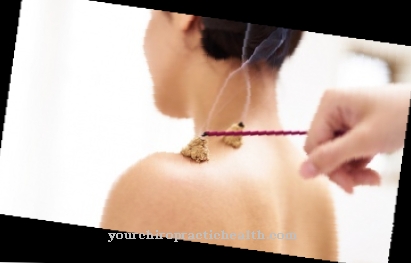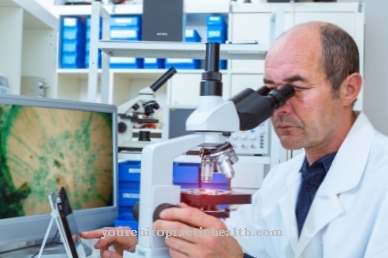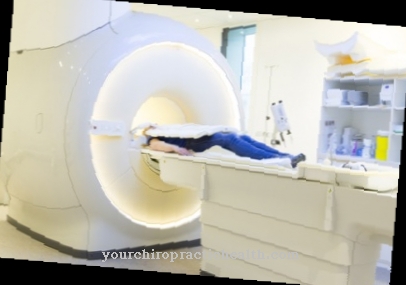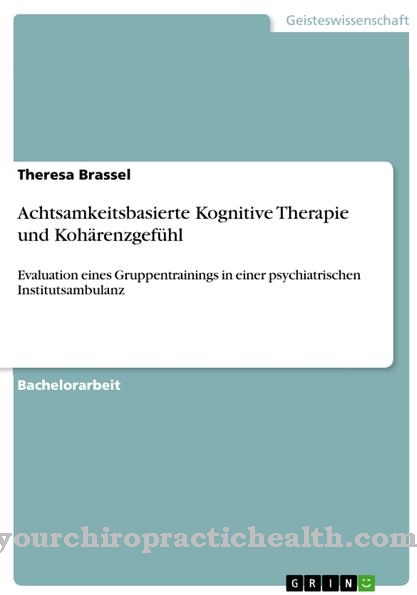The traditional Chinese medicine (abbreviated: TCM) is one of the oldest healing customers in the world. It originated in East Asia over 2000 years ago. According to grave finds and traditions, the first traces - in the form of herringbones as acupuncture needles - were already 5000 years ago.
The roots of Chinese herbal medicine are said to go back to the Stone Age. Traditional Chinese medicine is now practiced in various forms around the world, and some of its therapeutic elements, such as acupuncture, are also enjoying increasing popularity in the West.
What is Traditional Chinese Medicine?

The teaching of traditional Chinese medicine takes a holistic approach. Ailments and illnesses are not considered in isolation, but the body and its organ systems are understood as a unit of mutually influencing energies and dynamics. The elementary life energy according to traditional Chinese medicine is the so-called Qi. This is seen as an energetic process that flows in a steady flow through the human body.
Qi can be translated with breath, energy and power, but also with air, temperament or atmosphere. It has an essential meaning in Asian culture and shapes the understanding of the world and life there. In traditional Chinese medicine, Qi is responsible for the harmony of organic and hormonal processes, but also for moods and temperament.
The symbols yin and yang are closely related to qi. According to TCM, their principle of polarity ensures an optimally balanced state of health, while an imbalance leads to illness. The principle of Yin and Yang is based on the belief that our world is subject to the principle of dualism. Day and night, sun and rain are constantly alternating, polarizing states that do not function without each other. According to TCM, Yin is viewed as the female-passive side that receives and is associated with the moon. Yang is the masculine, active and uplifting side that is associated with the sun.
Function, effect & goals
Traditional Chinese medicine is now used for many diseases. Acupuncture has proven to be very effective for back problems and migraines and is now covered by some health insurance companies.
But Qigong and Tai-Chi also provide valuable relief from tension and blockages. Many digestive disorders are relieved by Chinese drug therapy, especially when combined with dietetics. TCM is a valuable addition to conventional treatment methods, because it strengthens the body from within and thus brings about healing.
The most common healing method is acupuncture. With the help of fine disposable needles, certain points on the body are stimulated through the skin in order to let the Qi flow again. The mechanical stimulation of these points causes the Qi flow to be stimulated and thus brings about healing.
Chinese drug therapy consists of administering medicinal plants, minerals and animal ingredients. These are mixed and individually tailored to the person to be treated, e.g. B. as a tea or a medicinal brew made from plant components such as leaves, flowers, roots, bark and stems. There are precise instructions for use for preparation and use.
Taiji and Qigong are special movements within TCM. Various movement sequences are combined with breathing and coordination exercises and are also intended to bring the Qi back to flow, to release blockages, congestion and tension. This strengthens the organs and the nervous system and thus the life force.
The manual therapy (Tuina) works with different massage and grip techniques, grasping, kneading and stroking and tries in this way to solve the energy blockages in the body and to improve the blood circulation.

The TCM nutritional theory aims to strengthen the body preventively. TCM assumes that food has an energetic effect and can trigger certain vegetative processes. The food is divided into hot, warm, neutral, cool and cold. Chilli z. B. is considered hot, yogurt and other dairy products are considered cold or cool. Too much dairy products can cool the body too much and trigger mucus processes. The type of preparation also plays a role. Food should be enjoyed according to the season and in peace.
Treatments & therapies
In traditional Chinese medicine, the human organs are also divided into yin and yang. Every yin organ has a yang partner. Too strong or too weak an activity of one organ has a direct influence on its partner organ.The basic principle of all traditional Chinese forms of medicine is to bring the Qi back into its natural balance. The teaching of TCM assumes that so-called functional circles are located inside the body. These energy channels are also called meridians and are the focus of the treatment.
The treatment methods of traditional Chinese medicine are based on the principle of the five pillars. These consist of therapy using acupuncture, nutrition, herbal therapy, massages and various types of movement, above all Qi Gong. The five pillar practices are designed to help regain balance. The two main procedures are acupuncture and drug therapy.

With the former, blockages of the Qi flow are released by piercing the acupuncture points on the meridians with thin needles. The same effect also has the heating of those points (moxibustion) and their massage (acupressure). An acupuncture session lasts about 30 minutes. The patient lies relaxed on a couch. Before the puncture, the respective points are heated and massaged. The aim is to release Qi blockages with as few punctures as possible and to enable the patient to alleviate his symptoms.
The exact cause of the effect of acupuncture has not yet been researched, but many patient reports have confirmed its effect. The main areas of application of acupuncture include sleep disorders, muscle ailments, neurological diseases, gastrointestinal disorders and acupuncture preparatory to the birth of pregnant women.
In contrast to acupuncture, medicinal therapy is part of the internal therapy process. In TCM, natural medicines are used in particular - 90% of them are of plant origin. The diagnosis of the disease is usually made after a detailed conversation and a typical Chinese pulse and tongue diagnosis.
Skin tone and texture, the sound of the voice and the entire physical appearance of the patient are also included in the diagnosis. Chinese drug therapy works heavily with flavors. Each of the herbs used can be assigned a flavor and each flavor has its own effect on the body. Salty things, for example, should dry out, while sharp things should crank up and open.
Chinese medicines are usually given in the form of teas or decoctions. Meanwhile there are also ready mixes or capsules. They are usually prescribed in a combination of up to sixteen individual drugs. The areas of application are very extensive, most frequently respiratory diseases, flu-like infections, gastrointestinal complaints, skin diseases and allergies are treated with Chinese drugs.
You can find your medication here
➔ Medicines for relaxation & nerve strengtheningDiagnosis & examination methods
From a scientific point of view, many modes of action of traditional Chinese medicine have not yet been proven, which is why it is sometimes not taken seriously as an alternative medicine in the western world. However, numerous positive patient reports could confirm an effect. As with conventional medication, discomfort can also arise in Chinese drug treatment if used improperly.
Poisoning, for example through contamination of untested drugs on the black market, can be avoided by buying controlled drugs in pharmacies. A major criticism of TCM is its use of a large number of animal components from protected and endangered animal species. Under mostly cruel conditions, bears are kept for the production of bear bile.
Tigers, snow leopards, rhinos, saiga antelopes, saw rays, sharks and various types of turtles are still abused and killed for traditional Chinese medicine. German TCM associations speak out consistently against the use of endangered animal and plant species for the manufacture of medicines.
Risks, side effects & dangers
Since the TCM is a gentle, holistic healing process, there are no significant dangers and side effects to be considered. If there are occasional temporary side effects, they are usually so-called initial aggravations, which indicate that something is being set in motion in the body. They mostly disappear in the course of therapy. TCM as a valuable healing method, precisely because it focuses on the whole person and not just treats symptoms.









.jpg)



.jpg)



.jpg)







.jpg)


